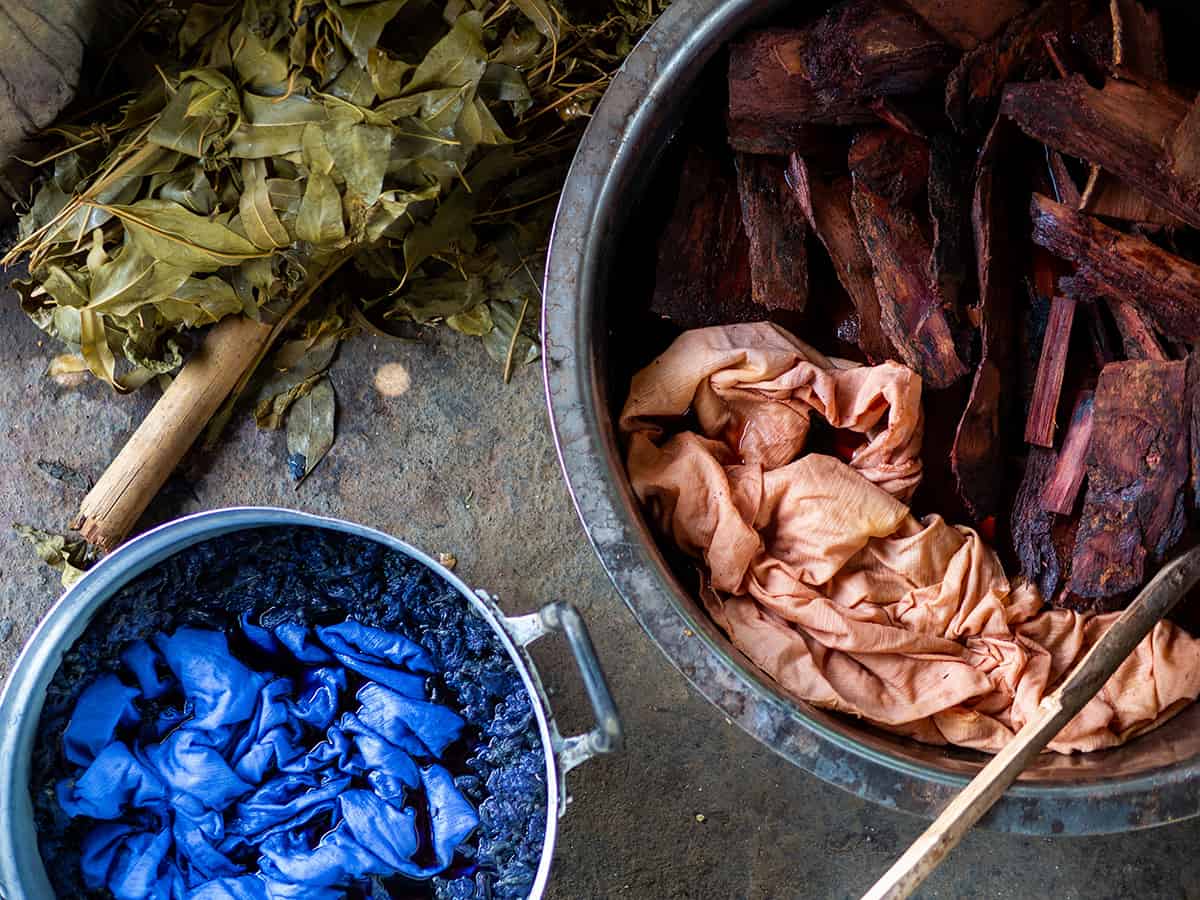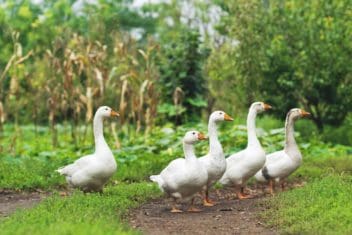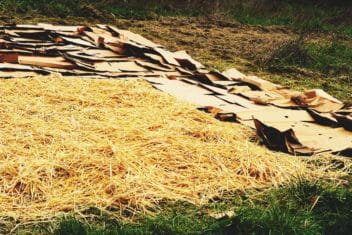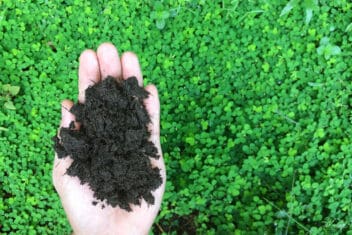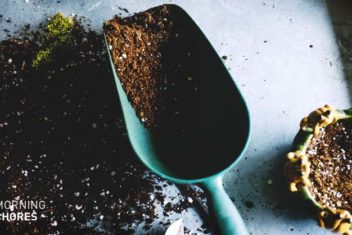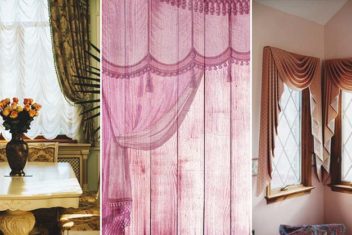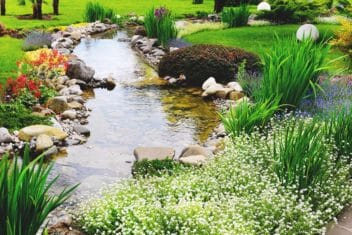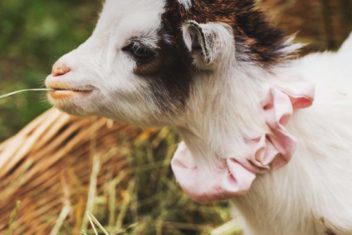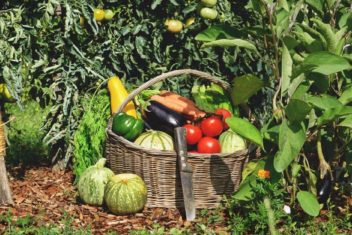Self-sufficiency can take many guises. For some people, the focus is on growing food, carpentry, and blacksmithing. Others like to spin, weave, and dye their own fibers using dyes made from plants.
When it comes to dyeing fibers, many of us choose natural pigments and fixatives over modern, chemical colorings. These plant-based hues have been used by our ancestors for thousands of years and can create a wide spectrum of colors.
The Basics of Natural Dyeing
When you’re adding color to fiber, remember that there are two basic components needed: the dye, and the mordant.
In simplest terms, the dye is the color part, and the mordant (also known as the “fixative”), is what helps to bind (or “fix”) the dye into the cloth so it stays there.
Some common chemical mordants include:
- Alum: You can find aluminum sulphate online, or occasionally at your local pharmacy
- Iron
- Tin
- Blue Vitriol/Copper Sulfate
- Chrome: This stuff is incredibly toxic, so if you’re dead set on using it, do so in very controlled circumstances. Make sure there’s plenty of ventilation, and don’t let any get into the local water table.
- Ammonia: You should be able to find ammonia in the household cleaners section at your local supermarket. Just don’t combine it with bleach or you’ll create a poisonous gas.
- Baking Soda: This alkaline powder is wholly non-toxic, and available pretty much everywhere.
- Cream of Tartar: Potassium bitartrate is a powdery acid that’s a by-product of the winemaking process.
Would you prefer to go a super-natural route, since you’re using plant-based dyes? If you’re aiming to be as self-sufficient as possible, there are also all-organic mordant options as well.
Natural Mordants:
- Sumac: Simmer fresh sumac twigs for about an hour, strain out the twiggy bits, and reduce the liquid by half
- Urine: human urine is ideal for mordanting, but you’ll need to age it. Collect it in a jar and allow it to age for several days.
- Salt: You can use standard table salt as a mordant, but Kosher salt can yield some of the strongest color-fastness.
- Vinegar
- Wood ash lye
You’ve probably noticed that some of these are alkaline, and some are acidic. Alkaline mordants tend to work best with plant-based fibers like cotton, linen, and hemp. In contrast, acidic mordants like vinegar are better with animal fibers like wool, alpaca, and angora.
Note that if you use an acidic mordant and your colors still run, you can set the color by dipping the fabric in a 50/50 vinegar/water solution. In contrast, if you’ve used an alkaline mordant like lye or baking soda, an acidic solution will strip the color rather than setting it.
Also, remember to make sure that the pots and utensils that you use for dyeing aren’t also used for cooking. Also, try to dye outside whenever possible, so you’re not cycling toxic fumes through your house.
It’s also important to keep in mind that different fibers “take” dye in different ways. You may wish to experiment with a variety of plant and animal fibers to see what various results look like.
As a final thought, remember that you can also decorate Easter eggs with many of these plant dyes! Just make sure to only use non-toxic mordants like baking soda and vinegar if you plan to eat the eggs later.
Let’s take a look at some common plants that you can grow or forage to make dyes.
Wild Dye Plants
With a little bit of foraging, you can come up with a wide range of colors for your projects. You may even have a number of these plants in your own backyard.
1. Goldenrod (Solidago spp.)
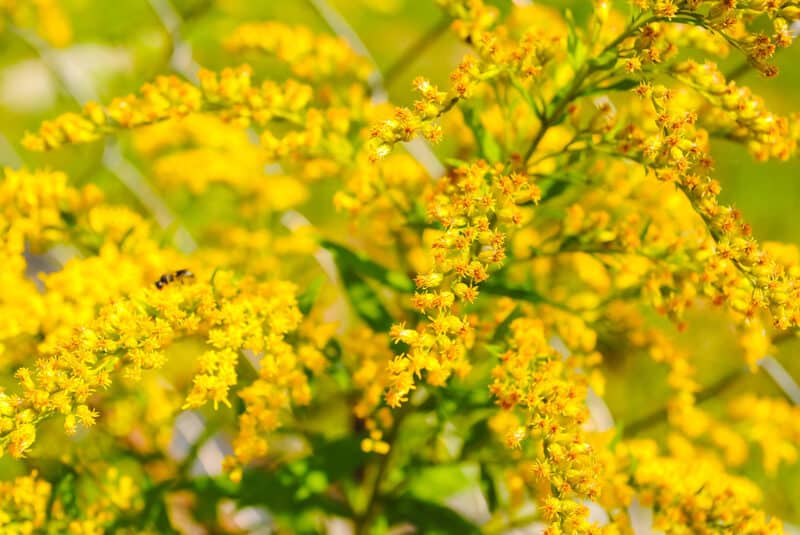
You can get a wide range of hues from goldenrod, depending on the combination of plant part + mordant you choose.
Use a mixture of immature and mature flowers with a tin mordant for vibrant, intense golden yellow.
Alternatively, you’ll get an incredible olive green using copper and iron mordants along with the plant leaves and stems.
2. Blueberries (Vaccinium spp.)
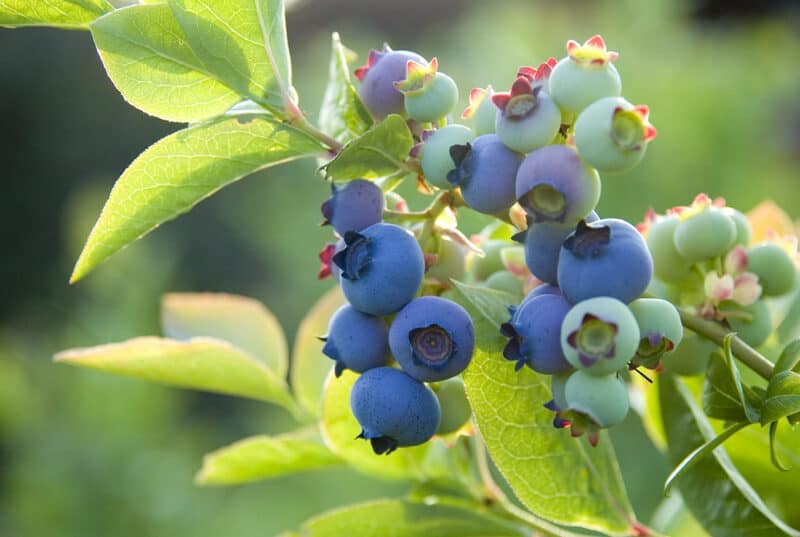
You can get a startling number of hues out of blueberry plants depending on which mordants you use.
Adding an acidic mordant like vinegar or cream of tartar to a dye bath made of blueberry juice will create a pastel pink hue.
In contrast, adding something alkaline (like baking soda) will yield sage green. Using alum with blueberries on wool will create mauve, but adding alum + iron and you’ll get lilac.
3. Elderberries (Sambucus canadensis)
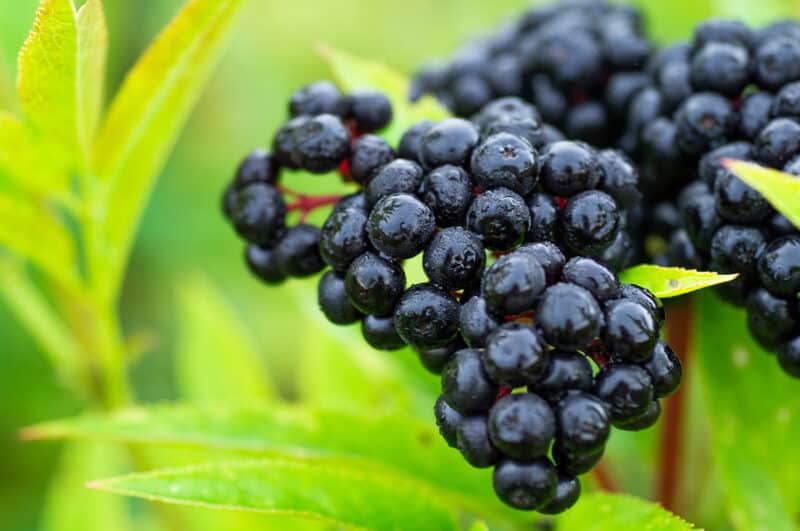
If you’re looking for a really gorgeous cool pink hue, be sure to gather elderberries next autumn. Pre-mordant some pale wool with alum, then give them a good bath in elderberry juice that has salt as mordant.
4. Chicory (Cichorium intybus)
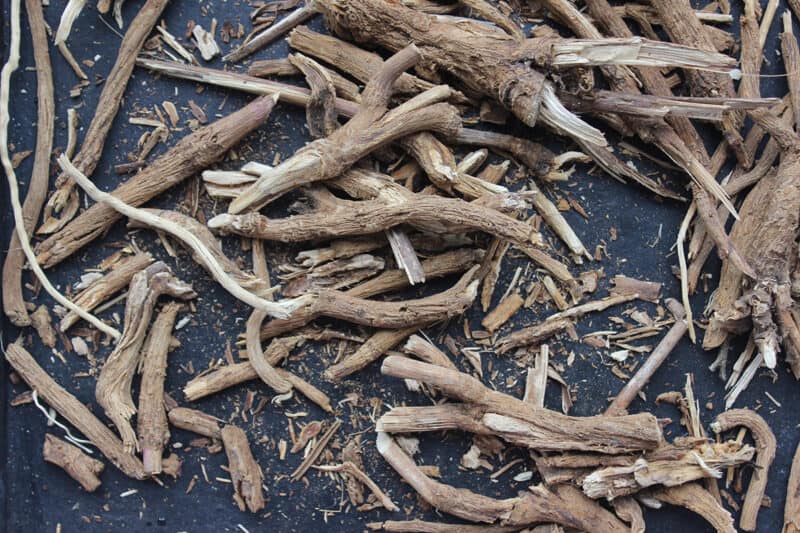
The same roots that give us a caramel-like coffee substitute when roasted can yield a lovely light brown dye. Chop the fresh roots well and simmer in water for at least an hour.
After straining, add alum as a mordant, and use animal-based pale fibers for best effect. If you’d like to deepen this brown shade, add some iron as well.
5. Dandelions (Taraxacum spp.)
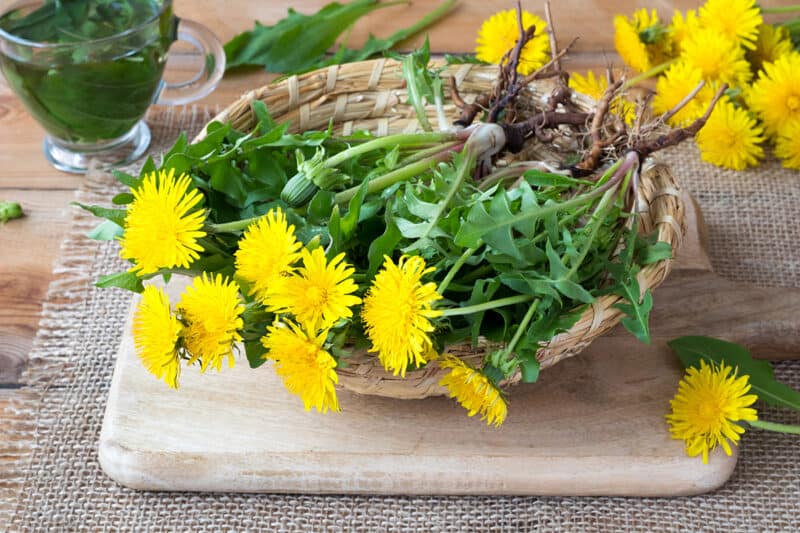
Remember how dandelions are edible from root to tip? Well, those different plant parts aren’t just delicious: they also yield different dye hues.
The roots will create gray-green dye with copper/blue vitriol as a mordant, tan with vinegar and salt, and bright gold with tin. The leaves and stems will make chartreuse with tin and greenish-yellow with alum, while the blossoms can make bright gold with tin, or medium yellow with alum.
6. Staghorn Sumac (Rhus typhina)
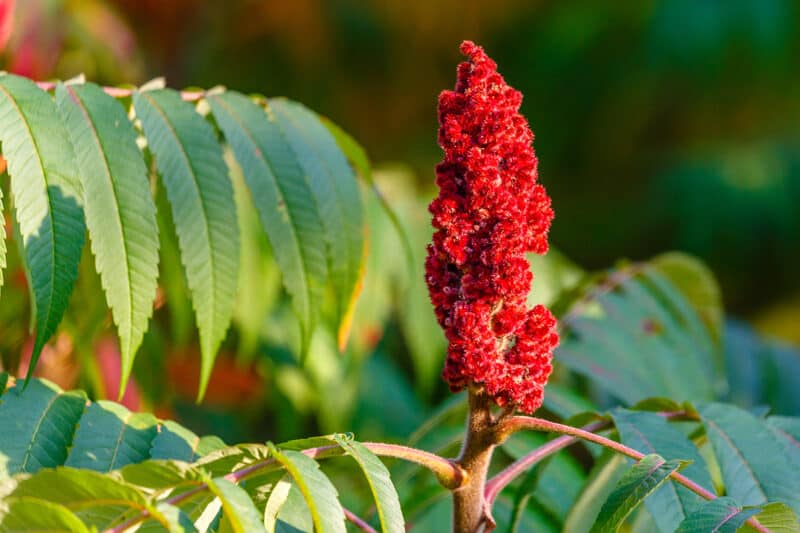
Those same fuzzy sumac flowers that make such a divine pseudo lemonade in autumn are also ideal dye plants.
They create a gorgeous deep burgundy red on unmordanted cotton or linen, but that dye will not be as color-fast as others that use fixatives. As a result, consider only using sumac dye for items that won’t be washed often, like quilts.
Alternatively, use a water wash on these items, and re-dye them occasionally to freshen up the color.
7. Curly Dock (Rumex crispus)
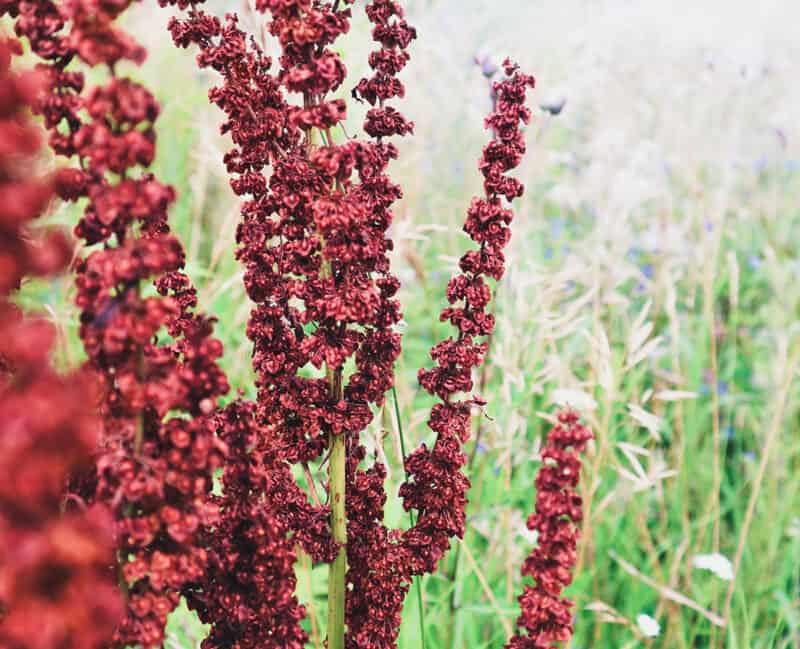
Use fresh green leaves and roots with iron and copper/blue vitriol to create a lovely deep grey-green hue. Alternatively, just use the roots with vinegar as mordant to create a pale tan.
8. Horsetail (Equisetum arvense)
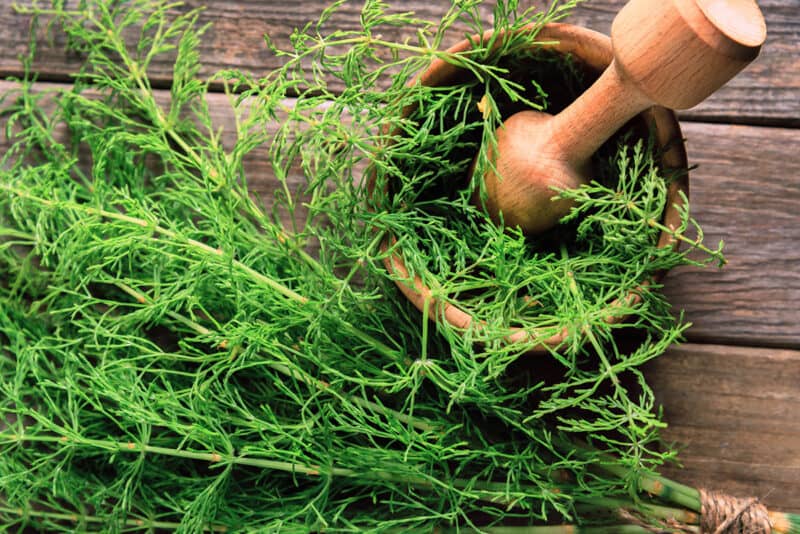
Horsetail creates some of the most vibrant, color-fast hues around. This makes it one of the best dye plants you can forage for!
Those soft, bristly green fronds create a vibrant yellow dye with tin as a mordant, or a soft green with alum and copper. You can also get light green with alum, or gray-green with iron.
Experiment and see what you can come up with!
9. Maple (Acer spp.)
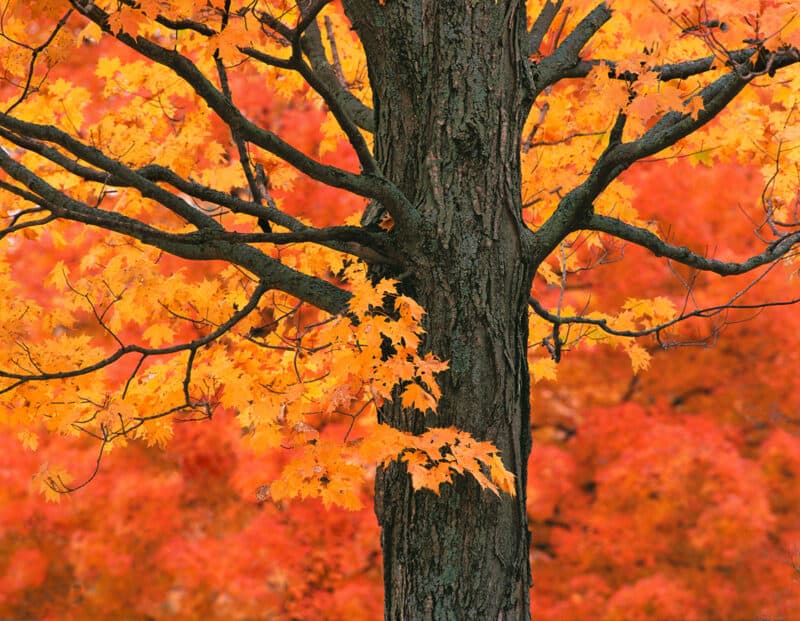
Although maple leaves look absolutely magnificent in autumn, their red and gold hues won’t transfer into dye baths. In reality, it’s their bark you’ll want to harvest for warm hues.
Harvest a bit of bark from a recently felled tree, or cut some twigs to use. Simmer these for about an hour, and add alum as a mordant for a rich reddish tan hue.
10. Coltsfoot (Tussilago farfara)
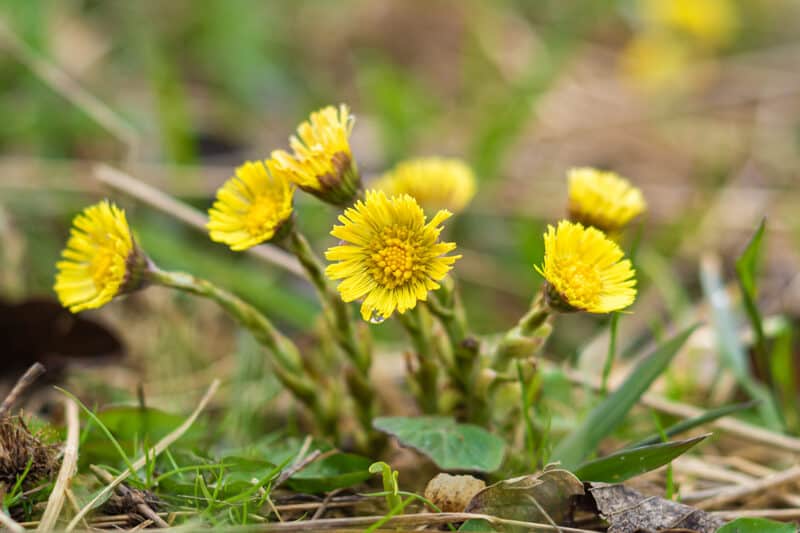
If you’re looking for a really elegant gray dye, then combine coltsfoot leaves with copper as mordant. Alternatively, you can make a pretty light yellow dye with the flowers and some alum.
Cultivated Dye Plants
You don’t have to rely on plants you can forage to create dye. You can grow your own plants or just head to the nearest market… which is particularly handy if you need to create some color in the winter.
11. Red Cabbage (Brassica oleracea var. capitata f. rubra)
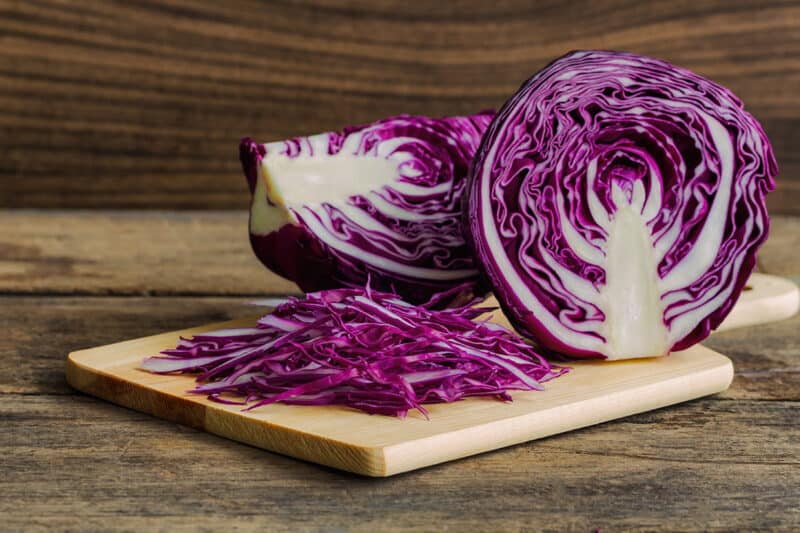
This tasty cabbage (which is lovely when braised with apples, onions, and cloves) can yield three different hues, depending on your mordant. It’s one of the few plant dyes that’s pH sensitive, so the colors will vary greatly.
For example, red cabbage dye on its own will create a rich purple hue. If you add baking soda as a mordant (which is alkaline), the dye will be robin’s egg blue.
In contrast, if you use vinegar as mordant (acidic!), then the dye will be magenta.
12. Marigold (Tagetes spp.)
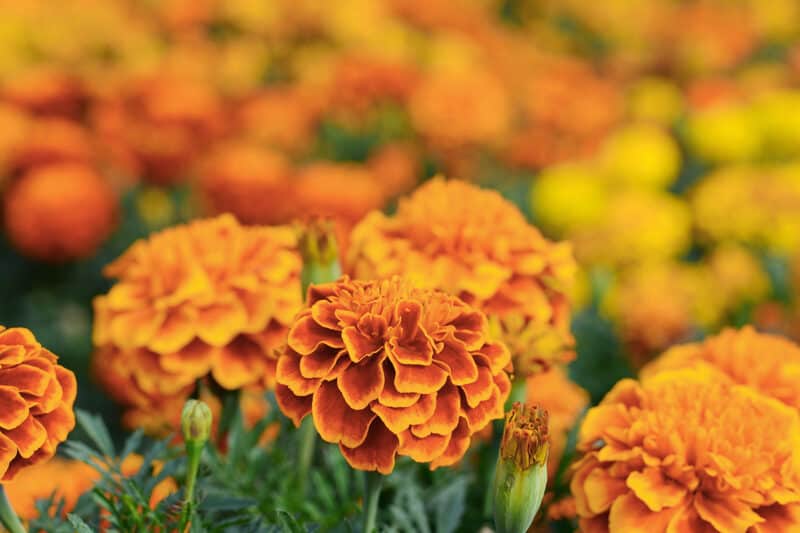
It’s weird to think of these bright blooms creating a dark brown dye, but that’s exactly what you’ll get if you use an iron mordant with marigold blossoms.
It’ll be a warm, rich chocolate-walnut brown, which just happens to go well with the golden hue you can get if you use alum as a mordant instead.
13. Yellow Onions (Allium cepa)
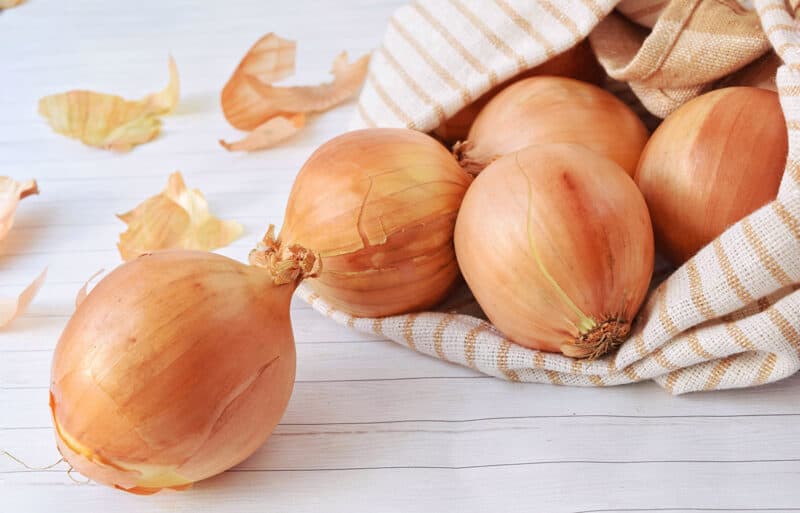
Like goldenrod, yellow onions can yield several different hues depending on the mordant. You’ll get a vibrant orange with tin as a mordant, and a stunning rust hue with chrome.
Use copper mordant for khaki green, or a mixture of chrome and tin for a deep chocolate brown.
14. Hollyhocks (Althaea rosaea)
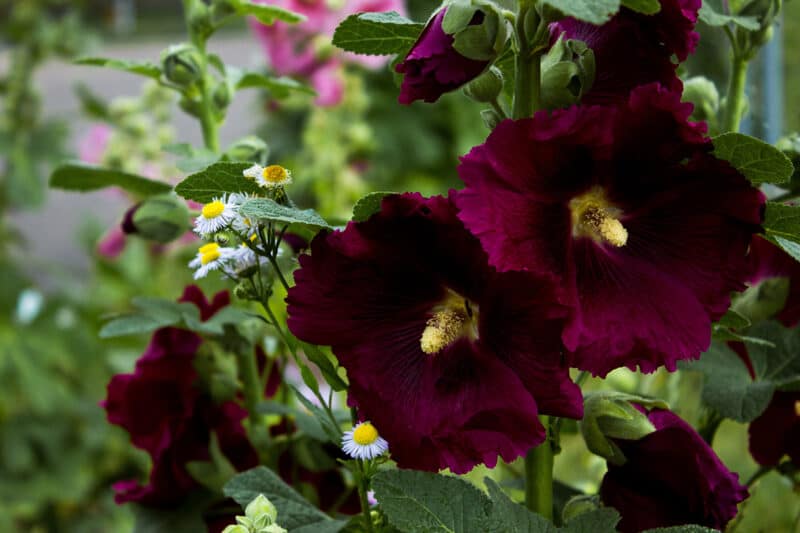
Red hollyhocks combined with alum as a mordant can yield a stunning pale purple hue, almost like lilac. Interestingly, using both alum and tin as mordant will turn that to a deeper blue shade.
15. Tobacco (Nicotiana tabacum)
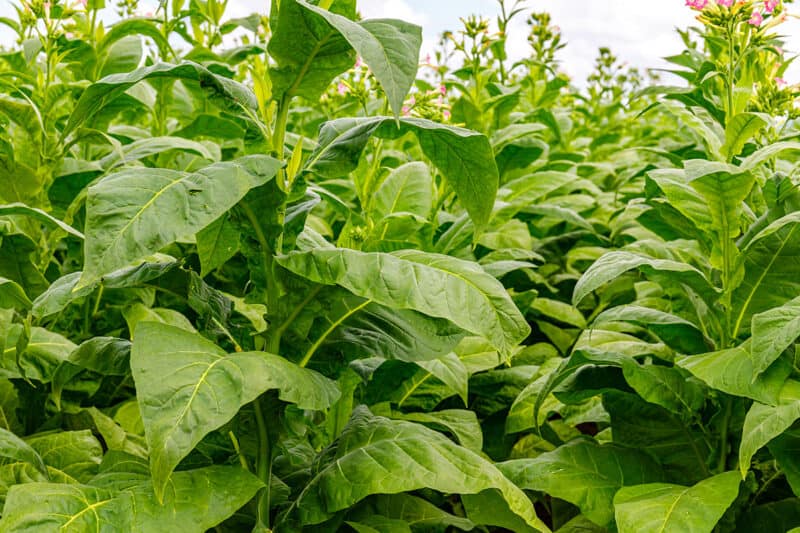
Are you growing tobacco to smoke? If so, consider using some of the fresh leaves to create a rather spectacular deep green dye.
Burley tobacco creates some of the most intense hues, and you’ll need to use copper sulfate/blue vitriol for both color intensity and fastness. This dye will be much more intense on light-colored wool and other animal fibers than plant-based ones.
16. Spinach (Spinacea oleracea)
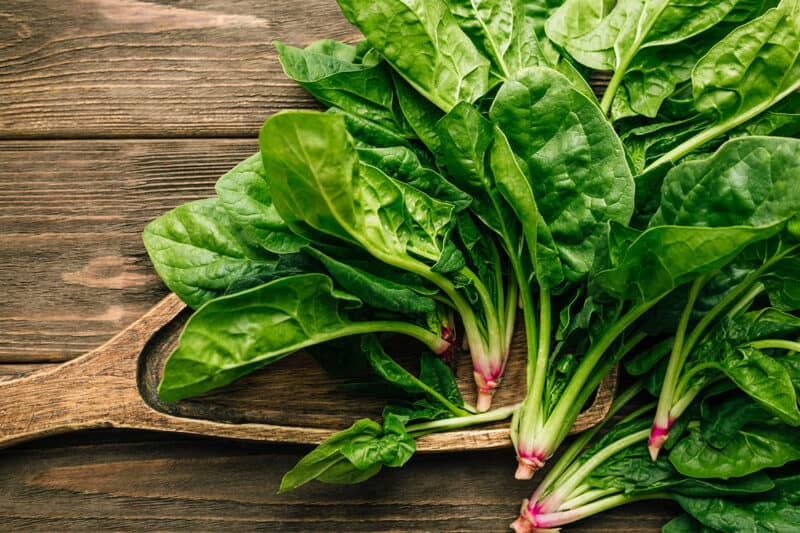
If you’re looking for a lighter, more chartreuse hue, turn your eye towards spinach. Although spinach plants are generally thought of as salad greens rather than dye plants, they make a vibrant yellow-green dye by using alum or tin. If you’d like a darker, richer green, add a bit of iron.
*Note: you can intensify the green hue by adding grass clippings or kale into the dye bath.
17. Beets (Beta vulgaris)

You can obtain a pale pink dye by simmering several chopped beets in water for several hours, and using alum as a mordant. If you go this route, the ratio is approximately 1 cup of alum to 4 pounds of beets.
For a more vibrant shade, however, use the juice left over from pickled beets. Grate some fresh beetroot into this pickling brine and heat gently. Warm this for about half an hour, then strain well.
Immerse your fibers into this and let them steep for several hours before rinsing. Note that pale animal fibers will take this dye better than plant-based ones.
18. Radishes (Raphanus spp.)

We know that radish tops are ridiculously tasty, but they just happen to make great dyes as well. You’ll get a pretty medium green from them with an iron mordant, or a light-to-medium yellow with a mixture of alum and tin fixatives.
19. Sunflowers (Helianthus spp.)
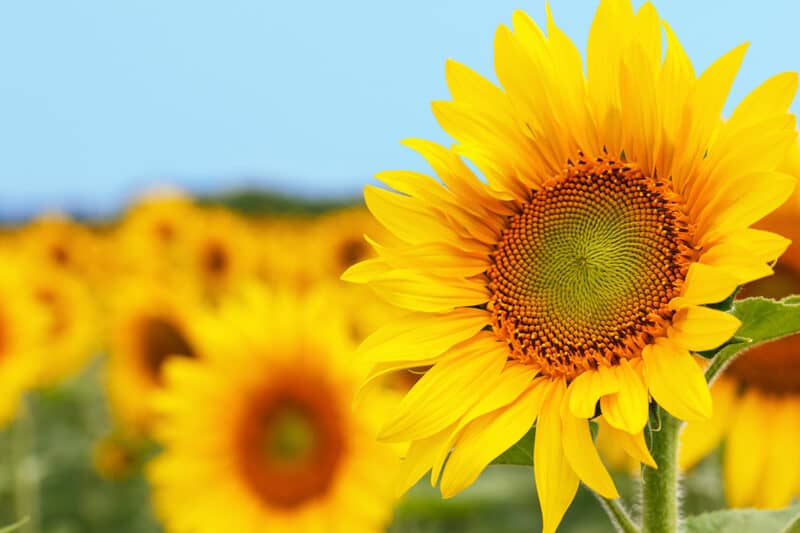
Those stunning golden sunflower petals yield a gorgeous golden hue with chrome as a mordant. You can even obtain a beautiful bronze dye if you use copper/blue vitriol as a mordant instead. Sunflower dye is quite color-fast on all fibers, but will be more vibrant on wool than on cotton or linen.
20. Delphiniums (Delphinium spp.)
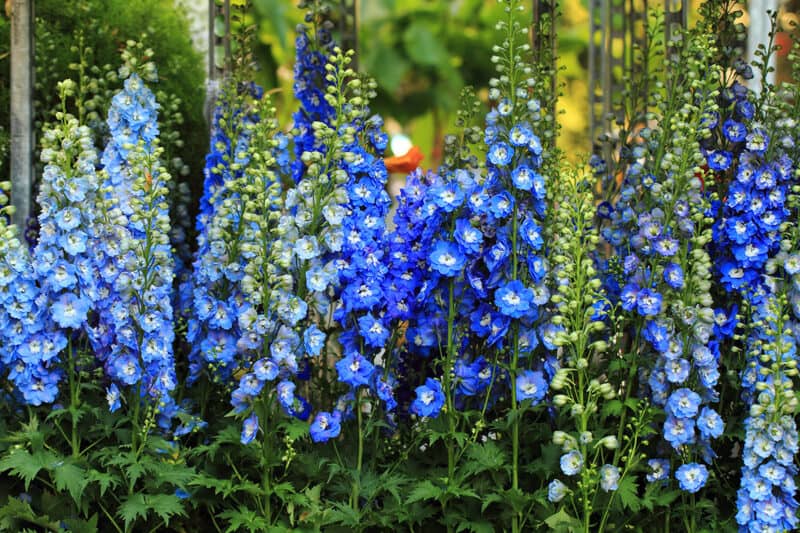
Blue is one of the most difficult hues to create with natural plant dyes. Most people turn to indigo or woad for these shades, but both require a lot of work and some rather toxic chemicals to create.
You can, however, make a lovely pale sky blue with blue delphinium/larkspur flowers and some copper mordant.
Pretty much all natural fibers benefit from “pre-mordanting”. This allows the dye to bite more deeply into the fabric, so the color won’t fade out. Or at least will fade more slowly over time.
